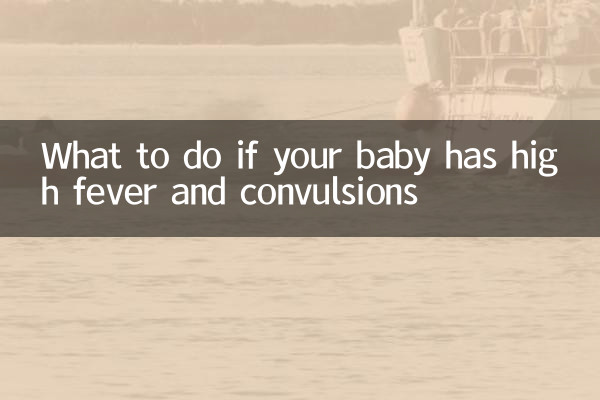What to do if your baby has high fever and convulsions
Recently, among the hot topics on the health of infants and young children on the Internet, "baby's high fever and convulsions" has become the focus of many parents' attention. High fever and convulsions are one of the common emergencies in infants and young children. The incidence rate increases significantly especially during seasonal changes or periods of high viral infection. This article will combine the hot data and professional medical advice in the past 10 days to provide parents with a structured response guide.
1. Recent statistics on febrile convulsions

| keywords | Search volume (last 10 days) | Top 3 areas of concern |
|---|---|---|
| Baby with high fever and convulsions | 285,000 times | Guangdong, Jiangsu, Zhejiang |
| First aid for pediatric convulsions | 157,000 times | Beijing, Shanghai, Sichuan |
| High fever convulsions care | 93,000 times | Hubei, Shandong, Henan |
2. Typical manifestations of high fever and convulsions
According to recent pediatric emergency data, high fever convulsions are more common in children aged 6 months to 5 years old. The main symptoms are:
| Symptoms | incidence | duration |
|---|---|---|
| sudden loss of consciousness | 92% | Usually 1-3 minutes |
| Rigidity or twitching of limbs | 85% | accompanied by loss of consciousness |
| Upturned eyeballs or squinting | 76% | appear briefly |
3. Emergency steps
Based on the recent first aid guidelines issued by tertiary hospitals, parents are advised to follow the following steps:
| steps | Specific operations | Things to note |
|---|---|---|
| first step | Keep airway open | Lying on your side to remove secretions from your mouth and nose |
| Step 2 | physical cooling | Wipe with warm water (avoiding the chest and abdomen) |
| Step 3 | Record the time of onset | If it exceeds 5 minutes, send to hospital immediately |
| Step 4 | Medical examination | Serious diseases such as meningitis need to be ruled out |
4. Clarification of common misunderstandings
Based on the recent hot discussions on the Internet, the following misconceptions that need to be corrected are sorted out:
| Misunderstanding | scientific explanation | authoritative source |
|---|---|---|
| Pinch people can stop convulsions | May cause secondary damage | Pediatric Branch of Chinese Medical Association |
| Stuff items to prevent tongue biting | Can cause suffocation | "Pediatric Emergency Medicine" 2024 Edition |
| Alcohol bath to cool down | May cause alcohol poisoning | National Health Commission Guidelines |
5. Suggestions on preventive measures
With reference to recent popular science content, effective preventive measures include:
| measures | Implementation method | efficient |
|---|---|---|
| Body temperature monitoring | Start intervention at 38°C | Reduces risk of seizures by 60% |
| Vaccination | Get your flu vaccine on time | Reduce high fever cases by 45% |
| home medicine box | Have antipyretic suppositories ready | Shorten dosing time by 30 minutes |
6. When is it necessary to seek medical treatment?
According to recent medical big data analysis, the following situations require immediate medical attention:
| red flag | possible causes | Urgency |
|---|---|---|
| First episode and age <1 year old | Central infection is possible | ★★★★★ |
| Unconsciousness after seizure | signs of brain injury | ★★★★★ |
| Recurrent attacks within 24 hours | epileptic tendencies | ★★★★ |
The recent rumor that "convulsions can cause cerebral palsy" that has been circulating on the Internet has been refuted by authoritative organizations. Simple febrile convulsions will not cause permanent brain damage. Parents should stay calm, master scientific handling methods, and pay attention to the latest medical guidelines released through official channels.

check the details

check the details